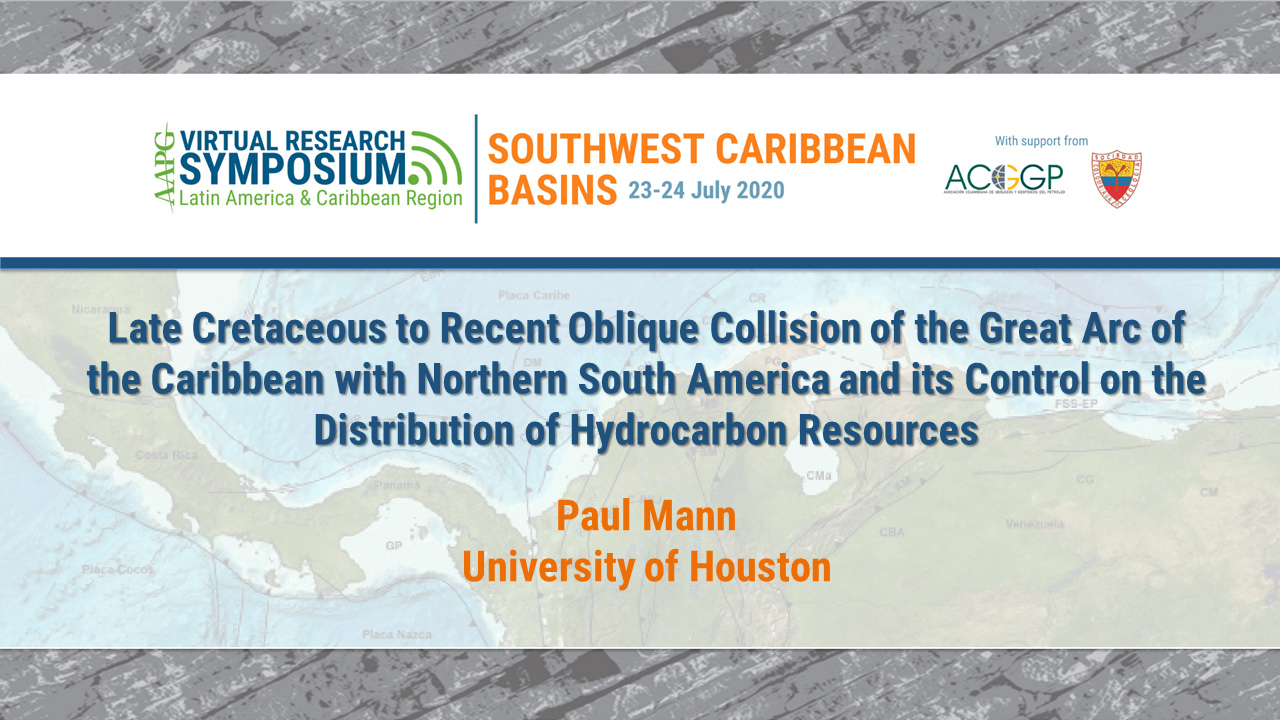
Summary
Author: Paul Mann (presenter), Department of Earth and Atmospheric Sciences, University of Houston
Using a mega-regional dataset that includes over 20,000 km of on- and offshore 2D seismic lines tied to wells, I illustrate three successive stages in the oblique collision of the Great Arc of the Caribbean (GAC) and the basin response along the northern, continental margin of South America. Stage One: Initial arc-continent collision is characterized by thrusting of the south- and southeastward-facing Caribbean arc and forearc terranes onto the northward-subducting Mesozoic passive margin of northern South America. Northward flexure of the South American craton produces a foreland basin between the thrust front and the downward-flexed continental crust that is initially filled by clastic sediments shed both from the colliding arc and South American craton. Stage Two: This late stage of arc-continent collision is characterized by termination of deformation in one segment of the fold-thrust belt as convergent deformation shifts eastward. Strain partitioning also begins to play an important role as oblique convergence continues, accommodating deformation by the formation of parallel, right-lateral, strike-slip fault zones and backthrusting (southward subduction of the Caribbean plate beneath the South Caribbean deformed belt). Stage Three: This final stage of arc-continent collision is characterized by east-west extension of the Caribbean arc as it elongates parallel to its strike forming oblique normal faults that produce deep rift and half-grabens. The three tectonic stages closely control the structural styles and traps, source rock distribution, and stratigraphic traps for the abundant hydrocarbon resources of the on- and offshore areas of Venezuela and Trinidad.
Paul Mann, University of Houston
Paul earned a BSc from the Oberlin College and a PhD from the State University of New York at Albany, both degrees in Geology.
He currently is Professor of Geology at the Dept. of Earth and Atmospheric Sciences, University of Houston, where he teaches, researches and supervises grad and undergrad students, and service to the EAS Dept. and other groups. He has also operated an oil industry-funded research group since 2005.
Paul is a member of AAPG, GSA, AGU, SEG and HGS.
Please log in to view or purchase the video presentation